MISSIONObservation
Akatsuki uses five cameras with narrowband filters at different wavelengths to study the Venusian atmospheric dynamics in three dimensions. Furthermore, observing the wavelength bands absorbed by water vapor, carbon monoxide, and sulfur dioxide grants insights into how the distribution of these substances change over time.
Venus is covered in dense sulphuric acid clouds; we are unable to see the atmosphere or surface below these clouds with our naked eyes. However, from the 1980s to 1990s, it was discovered that specific infrared wavelengths could be used to "see through" the clouds to observe the atmosphere and surface below. Transmittance of the clouds are different at different infrared wavelengths, so observations at multiple wavelengths allow for obtaining information on the atmospheric circulations at various altitudes.
Akatsuki traces an elliptical orbit around Venus with a period of about 10 days, and the distance between the spacecraft and Venus changes periodically (1,000 - 10,000 km at the near side (periapsis) and 370,000 km at the far side (apoapsis)). Continuous observation over a wide area from around the apoapsis allows for obtaining global snapshots of the atmospheric circulation. As for the near side, observing the cloud structure in detail and observing the atmospheric layer from the side (limb observation) allows for analyzing the vertical structure of the atmosphere. Various measurement missions are performed depending on the positional relationship between Venus, the Earth, and the Sun. For example, when Akatsuki passes behind Venus as seen from the Earth, the ultra-stable oscillator is used to measure the vertical profiles of temperature, pressure, and other parameters; when Venus completely obscures the Sun, lightning and airglow can be measured using LAC.

The six instruments installed on Akatsuki in order to measure Venusian atmosphere are each respectively equipped to measure different altitudes and aspects of the atmosphere. In this figure, the observation targets and instruments for them are shown at the left, and the observation altitudes are shown at the right. By tracing the patterns of objects such as clouds over time, we can obtain the distribution of wind speed (wind vector).



